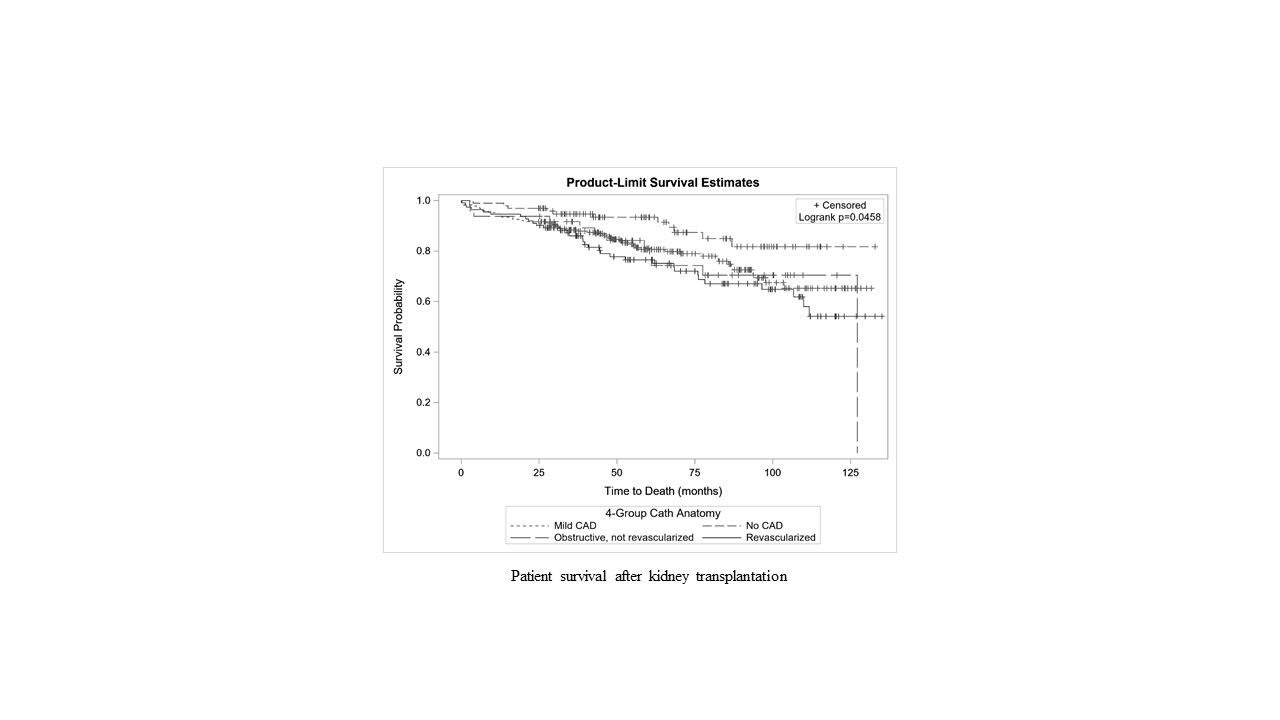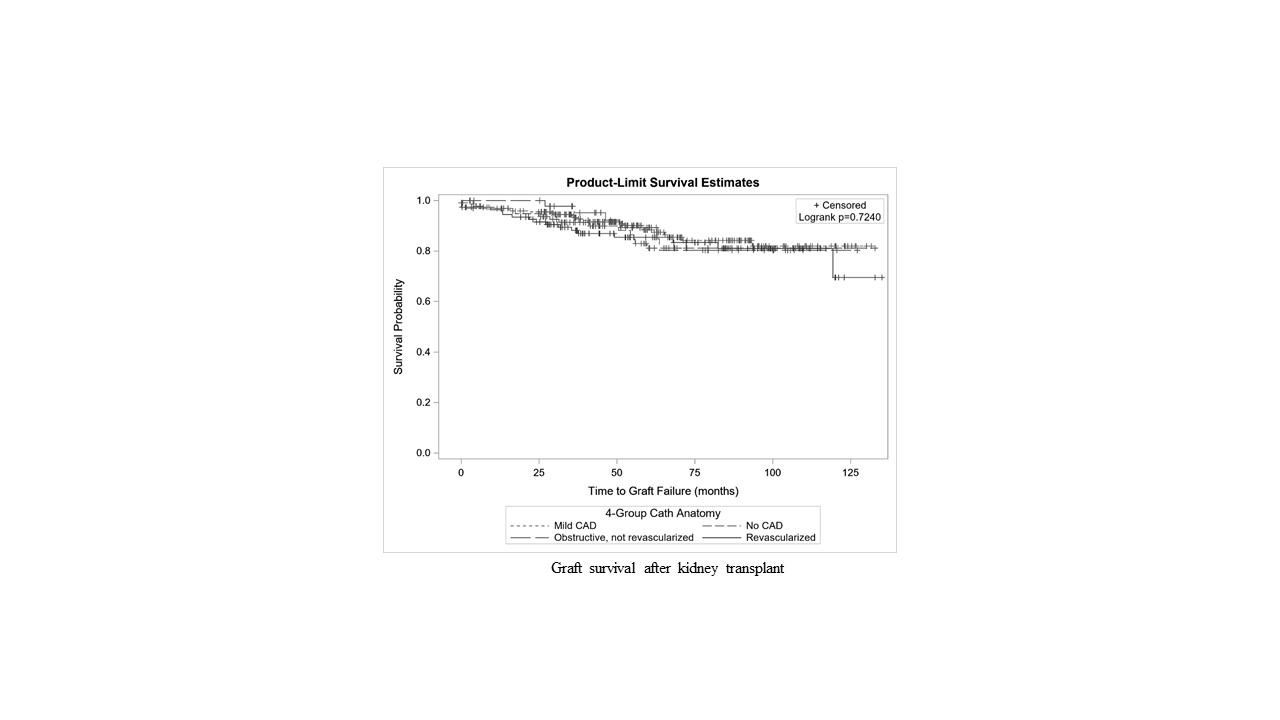Correlation of Coronary Anatomy and Interventions with Post-kidney Transplantation Outcomes
A. Sharma, T. Teigeler, D. Kumar, S. Moldowan, C. Bhati, G. Gupta, L. Kang, M. Levy
Virginia Commonwealth University, Richmond, VA
Meeting: 2021 American Transplant Congress
Abstract number: 73
Keywords: Elderly patients, Kidney transplantation, Mortality, Outcome
Topic: Clinical Science » Kidney » Kidney: Cardiovascular and Metabolic Complications
Session Information
Session Name: Kidney: Cardiovascular and Metabolic Complications
Session Type: Rapid Fire Oral Abstract
Date: Saturday, June 5, 2021
Session Time: 6:00pm-7:00pm
 Presentation Time: 6:30pm-6:35pm
Presentation Time: 6:30pm-6:35pm
Location: Virtual
*Purpose: There is considerable variation in the preoperative coronary evaluation before kidney transplantation (KT) and subsequent reporting of outcomes.
*Methods: Patients who received a KT (from 05/2009 to 05/2018) at our center, as well as a cardiac catheterization within the preceding five years were studied. The primary outcome was defined as a postoperative composite adverse event of acute myocardial infarction (MI), urgent revascularization, new reduction in left ventricular ejection fraction (LVEF), peri-operative hemodynamic instability, and 30-day patient death or graft loss. Long-term patient and graft survival were followed.
*Results: 484 KT recipients were divided into four groups based on coronary anatomy : no coronary disease (n=96), mild disease without obstruction (n=229), obstructive disease with revascularization (n=110), and obstructive disease without complete revascularization (n=49). There was no significant difference in the composite adverse events between the groups (21%, 28%, 30%, and 24%, respectively; p=0.46). There was significant difference in patient survival between the four groups (Figure 1) but no significant difference in graft survival was observed (Figure 2). In multivariable regression analyses, coronary anatomy groups were not significantly associated with the primary outcome. Recipient age at transplant (OR=1.71, p=0.03) and history of severe valvular dysfunction (OR=10.53, p=0.02) were significantly associated with composite early adverse events. Recipient age at transplant, history of diabetes and LVEF significantly impacted patient survival, regardless of the coronary anatomy. History of MI was the only factor that significantly increased the risk of graft failure (HR=3.57, p=0.02), regardless of the way coronary anatomy was grouped.
*Conclusions: Pre-transplant coronary interventions may result in good short-term outcomes but long-term patient survival after KT may still be adversely affected by CAD. Advanced age and severe valvular dysfunction may predict adverse events early after KT. There is a need to develop post-transplant protocols for monitoring recurrent or new onset CAD in KT recipients.
To cite this abstract in AMA style:
Sharma A, Teigeler T, Kumar D, Moldowan S, Bhati C, Gupta G, Kang L, Levy M. Correlation of Coronary Anatomy and Interventions with Post-kidney Transplantation Outcomes [abstract]. Am J Transplant. 2021; 21 (suppl 3). https://atcmeetingabstracts.com/abstract/correlation-of-coronary-anatomy-and-interventions-with-post-kidney-transplantation-outcomes/. Accessed December 14, 2025.« Back to 2021 American Transplant Congress


